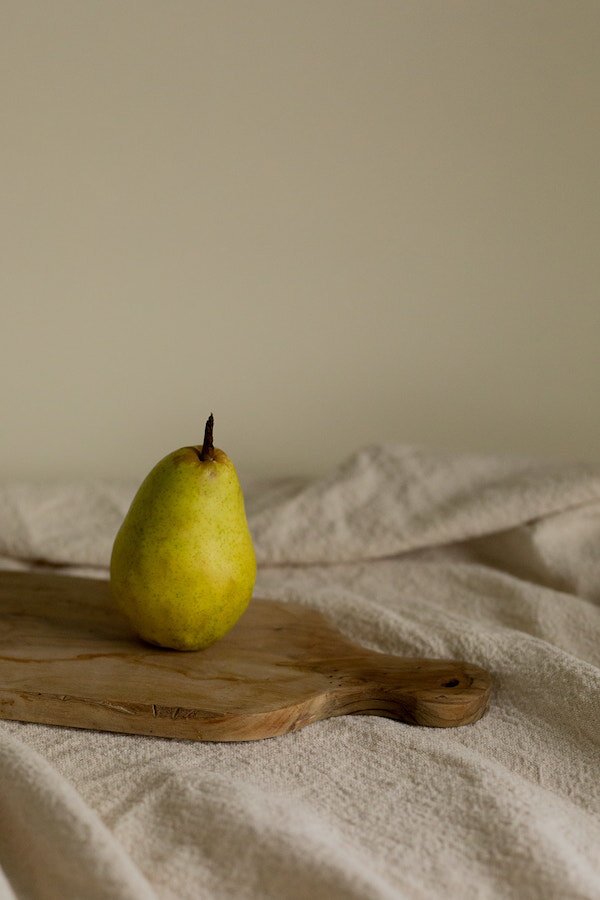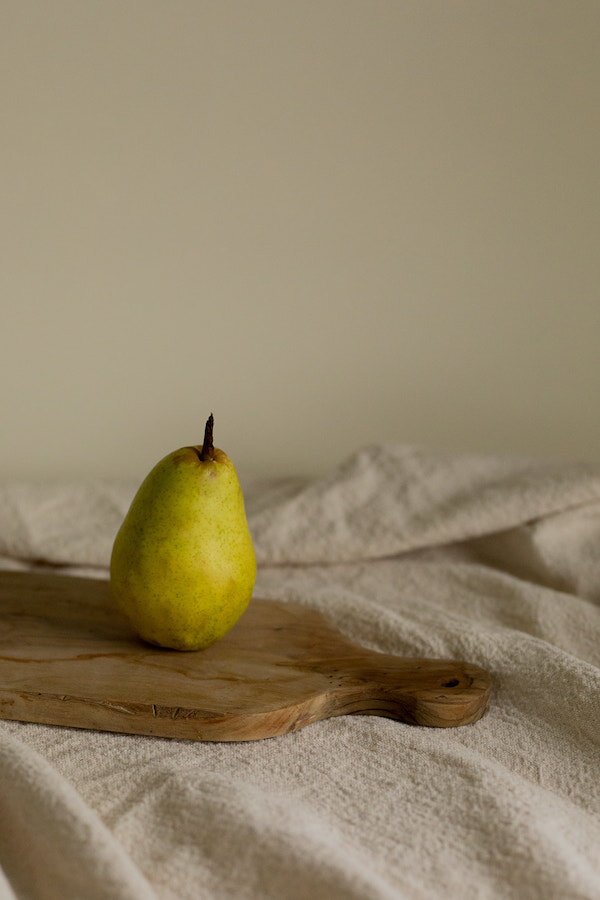
What Does An “Organic” Certification Really Mean?
The Origins Of Organic
When you’re stopping by the local farmer’s market for fruit or shopping for apparel, you’ll see the word “organic” mentioned on all kinds of labels. But what does it actually mean, and when is a product considered certified organic? Well, it’s complicated—but let us explain.
While pesticide-free and regenerative farming practices have been around for centuries, the “organic” movement began to take form in the US by the 1980s. By 1990, there were nearly two dozen states who each had their own organic food regulations and certifications. These individual guidelines made it difficult to hold varying industries accountable and it confused consumers in the process.
Ultimately, the USDA created the Organic Foods Production Act 1990 (a list of acceptable organic production outcomes and practices), in order to promote organically produced foods and to develop a national standard for organic food and fiber production. For consumers, having an organic certification was important for two reasons: Organic practices encourage a more sustainable and natural environment and they support long-term health by avoiding toxins and dangerous chemicals that we may otherwise ingest or absorb.
“Organic practices encourage a more sustainable and natural environment and they support long-term health by avoiding toxins and dangerous chemicals that we may otherwise ingest or absorb.”
Federal standards were eventually finalized in 2001; from then on, any vendor, farmer, or handler who wanted to receive a “USDA Organic” certification had to abide by rigorous requirements and auditing by authorized agents, like the California Certified Organic Farmers (CCOF), to ensure compliance with industry-wide standards and that brands didn’t intentionally mislead consumers.
Today, the United States Department of Agriculture (USDA) Agriculture Marketing Service’s National Organic Program (NOP) defines “organic production” as “a system that is managed to respond to site-specific conditions, by integrating cultural, biological, and mechanical practices that foster cycling of resources, promote ecological balance, and conserve biodiversity.”
What are the “certified organic” standards?
Because crops differ from livestock and multi-ingredient products, these standards vary in their respective industries. Crops are generally considered products that are farmed and/or harvested and transformed into a commodity, ranging from rice and corn to cotton to blueberries. Livestock standards focus on animals including fish, meat and poultry, eggs and dairy by-products.
Here’s a brief look at each, as regulated by the USDA:
For crops (including produce):
Crops and produce must be grown on soil that has had no prohibited substances applied for three years prior to harvest.
Prohibited substances include most synthetic fertilizers and pesticides. In instances when a grower has to use a synthetic substance to achieve a specific purpose, the substance must first be approved according to criteria that examine its effects on human health and the environment.
For livestock and poultry:
Regulations require that animals are raised in living conditions accommodating their natural behaviors (like the ability to graze on pasture), fed 100% organic feed and forage, and not administered antibiotics or hormones.
For multi-ingredient products:
If a product is represented as organic, at least 95 percent of its ingredients must be certified organic. According to Jennifer Kaplan, an instructor with the Culinary Institute of America, “The remaining five percent of ingredients must be organically produced, unless commercially unavailable or allowed on the National List. The National List of Allowed and Prohibited Substances lists the exceptions to the ‘organic only’ rule. In other words, there are [a number of] non-organic ingredients that can be included in organic foods.”
If a product touts a “made with” organic label, at least 70 percent must have certified organic ingredients, and even then, the USDA organic seal cannot be used.
Any products with less than 70 percent organic content can identify specific organic ingredients on their label, but nothing further.
It’s important to note that carrying an “organic” certification is not necessarily the same as being considered humane. Matthew Sherman, CMO of the USDA-certified organic Handsome Brook Farms, explains: “Remember that ‘organic’ certification is not necessarily a welfare statement, especially with livestock and livestock products. It refers to the feed and its additives as well as the land, but this does not mean that the animals are always treated well.” This means that in the case for eggs, for example, hens must be “cage-free” but they might still be stuffed into a crowded barn without the space to roam.
“These standards may help stop bad practices, but it doesn’t necessarily promote good ones.”
Sherman continues, “Conversely, welfare claims like free-range, grass-fed, or pasture-raised do not equate to organic, they just mean that the land has not been sprayed with pesticides or that the animals have not received antibiotics.” So if these additional standards are especially important to you, you’ll want to look for both organic and humane/wellness certifications, particularly on animal products.
Lastly, these standards may help stop bad practices, but it doesn’t necessarily promote good ones. Abianne Falla, Co-Founder of CatSpring Yaupon, who went through the CCOF certification process shares: “I think we will start to see a shift in additional organic certifications for consumers to know when an ingredient or farmer is producing in a beneficial and sustainable way.” That’s why CatSpring is pursuing an additional Regenerative Organic Certification so consumers can feel confident that the business is doing everything they can to positively impact our collective ecosystem.
How does a business receive an organic certification?
Becoming certified organic is a lengthy and expensive process for most businesses, taking place over several years and racking up thousands of dollars in costs for audits, site visits, and expenses. In Falla’s case, it took over four years to receive this certification even though CatSpring’s processes were organic from day one: “We’ve spent over $25,000 on this certification over the last four years, but thankfully there are a lot of grant resources to help mitigate those costs. The outcome has definitely been worth it.”
As for Handsome Brook Farms (which works with 80+ different farmers and therefore, all different certifiers), this was an exhaustive process, too: “Some [certifiers] are more accommodating and understanding than others. Some require very frequent updates on what would be considered minor updates to process, like small changes to feed composition.”
“Because the standard is so high, even small actions or decisions can disqualify a business from becoming certified [organic].”
And because the standard is so high, even small actions or decisions can disqualify a business from becoming certified, as Sherman recounts: “Our small farmers need to keep very meticulous records, because small actions might make their land not qualify as organic and they also have to reapply often.” A common example would be what are considered “prohibited materials,” which goes beyond pesticides to include things like wood that’s been treated to build a fence. “Often, even the lumber yard that supplied that post doesn’t know if it has been treated, and the farmer has to go back to the manufacturer (sometimes years later!) to determine if it is acceptable. These are the little details that can make the process challenging.”
Melissa Lis of Jumby, a USDA-certified organic personal care brand, echoes these sentiments: “The biggest challenge is verifying each and every ingredient is organically grown and produced. You may have ingredients coming from many different farms and vendors, so it’s up to both the brand and the lab to vet and select sources that are in compliance with certified organic regulations.” So even if just one ingredient in the product is off, they’ll return it and the process begins again. “It can take several weeks, even months, if you are required to reformulate and resubmit.”
“Because the process is so time-consuming and costly, small or new businesses may not be able to achieve this certification even if their practices are largely safe and humane ones.”
Once a business does receive the certification, it can use the label for up to five years at a time, but certifiers conduct regular check-ins and audits throughout that time and each business must go through the process of renewing when the accreditation period ends.
Because the process is so time-consuming and costly, small or new businesses may not be able to achieve this certification even if their practices are largely safe and humane ones. So while looking for the “organic” label can be helpful, there are many businesses out there who are just as ethical as well or ones who use blended materials for longevity and quality alongside natural and organic fabrics or goods.
What should I look for to vet or verify a brand’s certifications?
When a brand proudly touts an USDA logo (if they’re US-produced) or certified organic sticker on their website, that’s a hopeful sign… but that unfortunately doesn’t always make it true. (Falsely promoting your food as certified organic does come with a hefty fine of up to $18,530 for each violation, if it’s discovered.)
If a product or brand uses “organic” in its labels or name but doesn’t have a certifying agency associated with it, that’s a red flag. For the most part, the word “organic” can’t even appear on the front label in the name or logo unless it’s certified to be 95+ percent USDA organic.
If you can, look at their website and see what other certifications they have as well, like if they’re a certified B Corp or are Fair Trade Certified, so you can understand how responsible their supply chain and manufacturing processes are. Falla of CatSpring also mentions, “When a brand is transparent about their sourcing by focusing on farmers or ingredients, that’s usually a good indication that they are taking the time to vet their producers and making careful sourcing decisions!”
“If you can, look at their website and see what other certifications they have as well.”
Want to dive even deeper? You can look into the USDA Organic Integrity Database or for any fraudulent organic certifications as decided by the NOP. Kaplan explains: “By viewing the PDF versions of these fraudulent certifications, anyone can always verify that the certifier is 1) actually certified and 2) that the certifications [legally] apply to the product.”
In case it hasn’t become extremely clear 😉, earning an “organic” certification is HARD, but it does help to protect us all. What other questions do you have about this process? Let us know below in the comments!
Henah Velez (she/her) is an Editor at The Good Trade. She holds a Master’s in Social Entrepreneurship and is a proud Rutgers grad. Originally from NJ, Henah’s now in Santa Barbara, CA, where she loves shopping small, hanging with her pets, or traveling. Say hi on Instagram!





